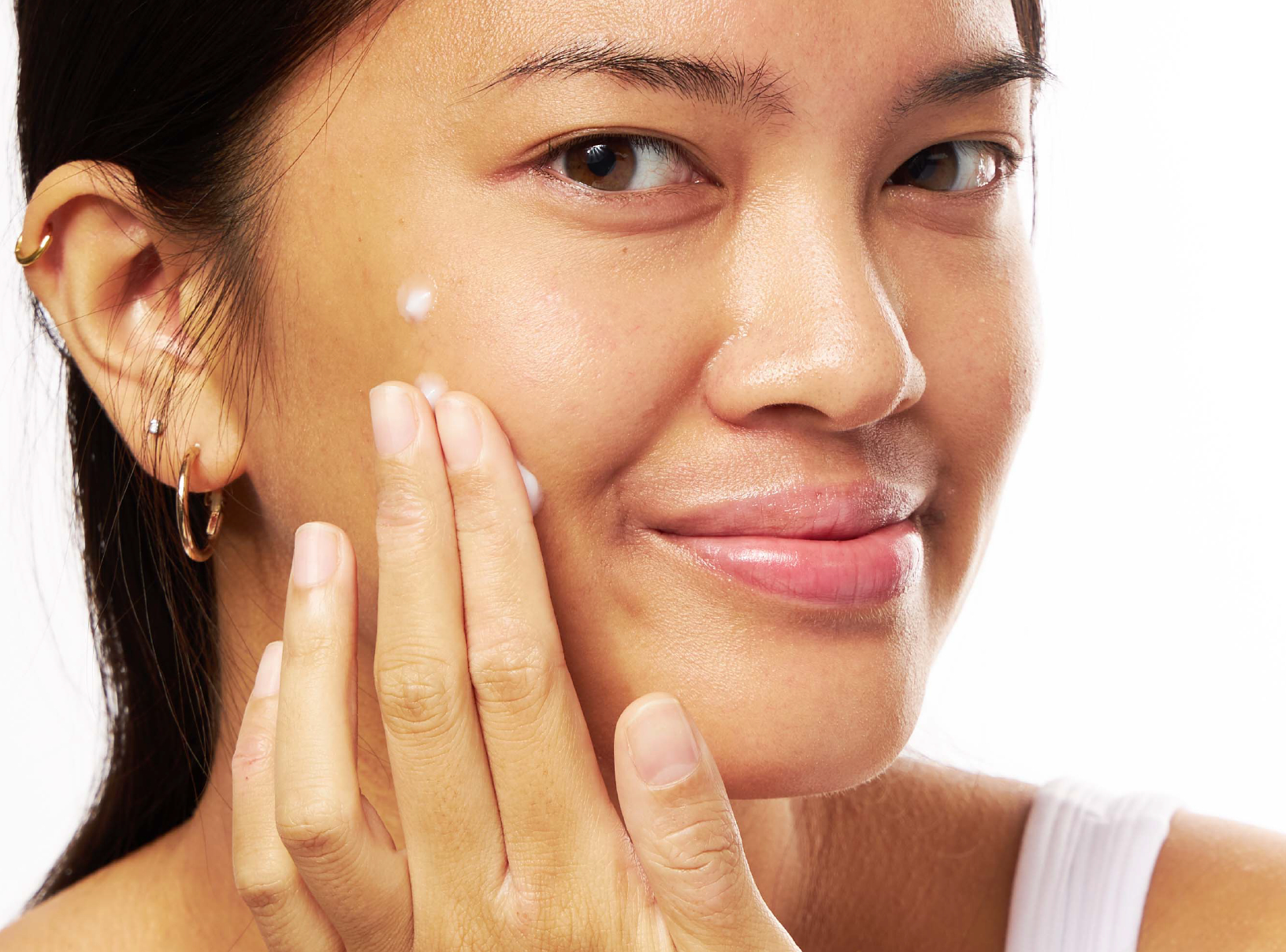Apostrophe Treatments
Everything You Need to Know About Topical Spironolactone
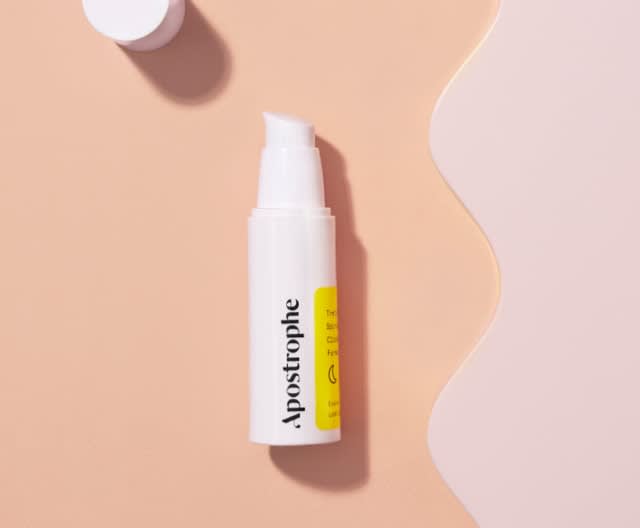
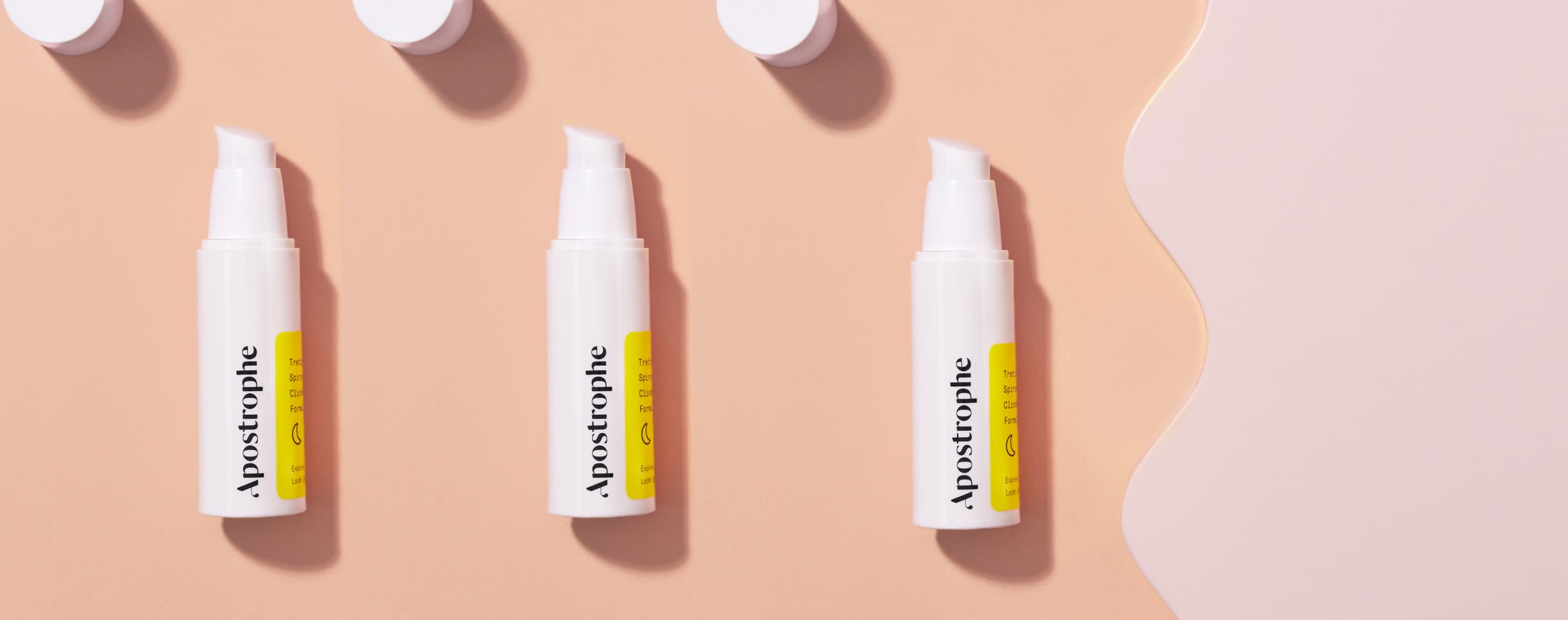
SHARE
Apostrophe Treatments
Everything You Need to Know About Topical Spironolactone
Medically reviewed by Aimee Paik, MD
Written by Lisa Guerrera
Last updated 4/1/2022
We all know spironolactone as an oral medication best known for its hormonal acne fighting prowess. But did you know you can also use spironolactone in the topical form? Apostrophe is now the first company to offer this amazing hormonal acne treatment in a custom topical medication that’s combined with other science-backed ingredients like tretinoin, clindamycin, and tranexamic acid.
What is Spironolactone?
We asked Dr. Aimee Paik, board-certified dermatologist and Apostrophe’s Medical Director: “Androgens (a class of hormone) plays a major role in all types of acne in both men and women. Dermatologists often treat hormonal acne in women with oral contraceptive pills or spironolactone which counter the effects of androgens. Due to systemic side effects, men are not eligible for treatment with these oral medications.”
Topical vs. Oral Spironolactone
Oral spironolactone works from the inside out to prevent hormonal acne but some people can’t tolerate the side effects that may come with it.
Topical spironolactone can be a good solution that doesn’t cause these same systemic side effects but can help with hormonal causes of acne at the skin level. It can also be used with oral spironolactone to reduce the amount of oral spironolactone needed.
Can men use topical spironolactone?
Spironolactone in a topical form is an innovative treatment that doesn’t have systemic effects and can help acne in both men and women. It can be used in all ranges of acne severity.
Oral spironolactone can’t be used by men since it’s disruptive to their hormones. However, men can use topical spironolactone because it has no systemic hormonal side effects and does not affect male hormones.

Is topical spironolactone as effective as oral spironolactone?
Think of topical spironolactone as a booster to your current acne treatments– not necessarily a replacement. While both treatments are helpful for all severities of acne, it's important to remember that oral spironolactone can fight hormonal acne from the inside out so it’s best to combine these two treatments to cover all your bases.
Can you use both topical and oral spironolactone at the same time?
Yes! In fact, our doctors encourage it. Our doctors suggest that those who are currently using oral spironolactone (and tolerating it) to continue using their oral treatment even if they add in the topical version. You can also talk to your dermatologist about potentially lowering your oral medication dose once you introduce topical spironolactone into your treatment plan.
Can you mix topical spironolactone with other acne medications?
Another yes! Topical spironolactone is best combined with other powerful treatments to yield the best results. We have two main formulas that contain topical spironolactone:
Formula #1: All your acne fighting favorites in one step
5% topical spironolactone
0.018-0.1% Tretinoin (your doctor will choose the best percentage for you)
1% clindamycin
Formula #2: For acne and hyperpigmentation
5% topical spironolactone
0.018-0.1% Tretinoin (your doctor will choose the best percentage for you)
5% tranexamic acid
Side effects of topical spironolactone:
Oral spironolactone has side effects like increased urination, headaches, dizziness and high potassium levels in susceptible individuals. Oral spironolactone also has hormonal effects and can cause menstrual spotting, breast tenderness and can potentially cause birth defects.
Topical spironolactone is not absorbed into the blood and will not cause these systemic side effects. But that doesn’t mean there are no side effects! The most common are redness, peeling, and skin sensitivity, so it’s best to ease into treatment. Your skin will adjust to the medication over time.
Are there studies that back up this treatment?
We’re glad you asked! Here’s an overview of the most important ones:
Finding #1: Topical 5% spironolactone gel decreased oil production at 12 weeks without any local side effects.
Finding #2: Topical spironolactone reduced acne lesion counts.
Finding #3: Topical spironolactone seems to be effective without systemic side effects. Local side effects were few and mild.
Finding #4: Topical spironolactone only appears to have local skin effects even in males who applied topical spiro to 55% of their body area.
Finding #5: Topical spiro competes with the binding of DHT at DHT receptors in sebaceous gland and acts as an antiandrogen. When applied to large areas, no side effects were seen.
Finding #6: Topical spironolactone was effective for treating acne after one month in this small study (95% experienced improvement).
Shop this post
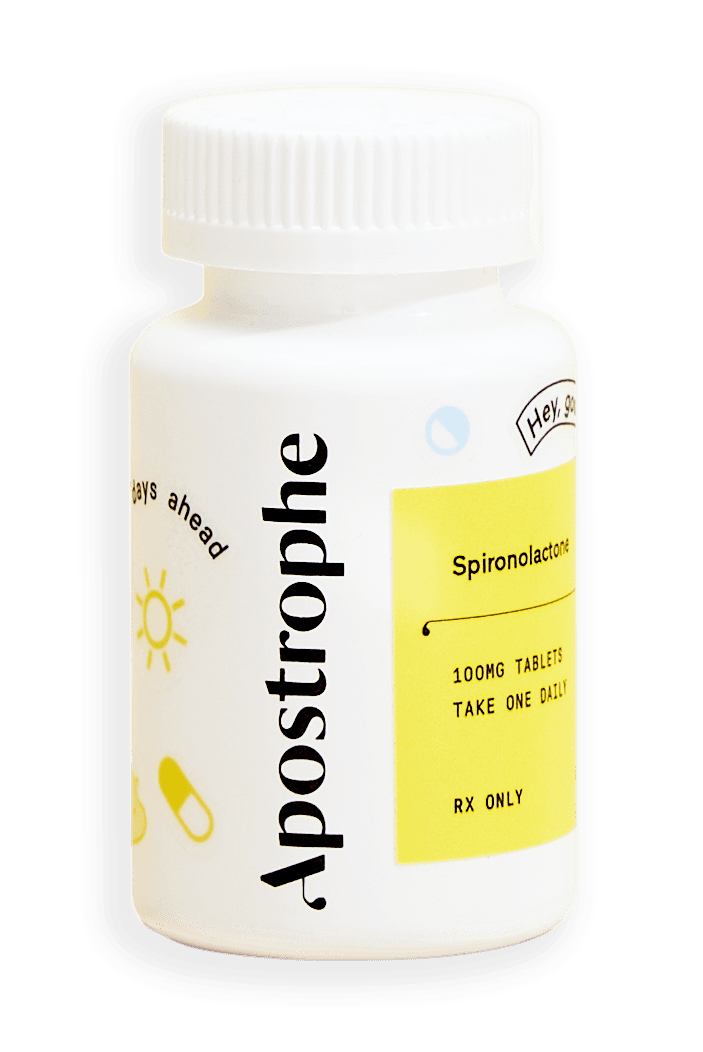
Oral Spironolactone
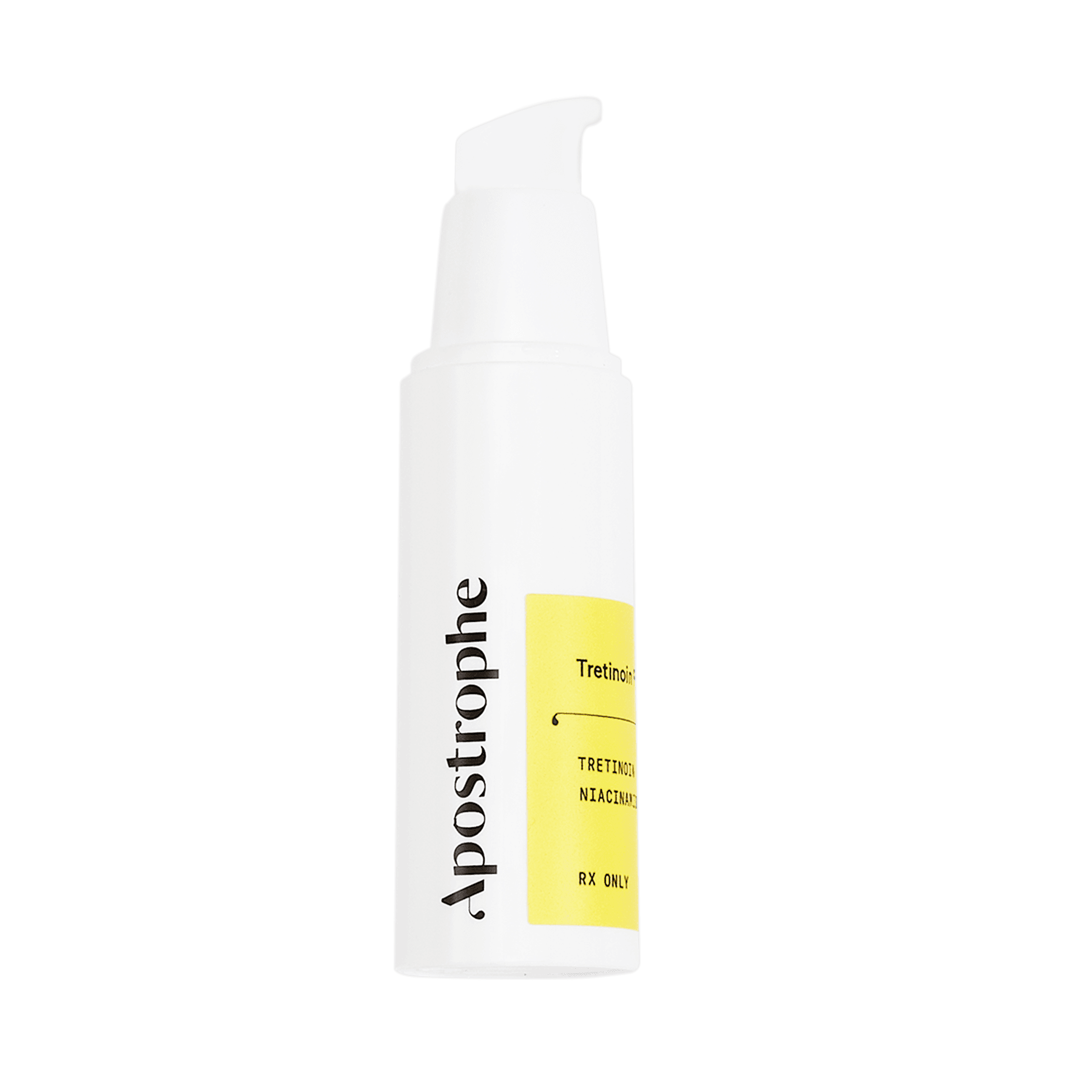
Topical Spironolactone
Like what you just read? Sign up for our email list to get the scoop on skincare science delivered straight to your inbox.

Education
What is milia?
What is milia? Today, we’re jumping into one type of bump that you may have heard about most commonly in infants — milia.
Read More
Education
Best moisturizer for acne-prone skin
If you have combination acne-prone skin, figuring out which moisturizer is best for your skin might be tough. In this guide, we break down the best moisturizer for combination, acne-prone skin.
Read More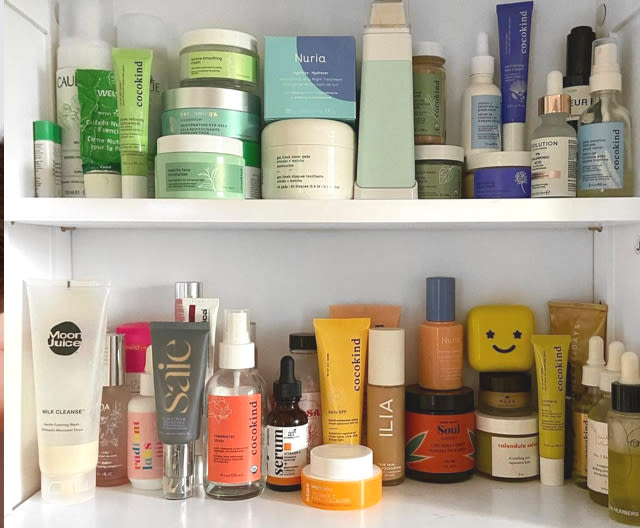
Education
How to build a face care routine
As you get into skincare, it might seem overwhelming, especially trying to figure out the order you're supposed to apply products in. Below, we detail how to build a face care routine for your skin!
Read More
